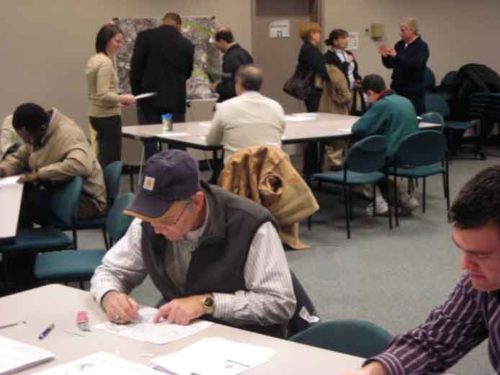

Landis Evans + Partners, formerly Sprinkle Consulting, developed this long range implementation master for the metropolitan Atlanta county of Cobb. This Plan addressed remarkable diversity in neighborhoods, both demographically and ‘infrastructurally. Landis Evans combined the analysis of potential biking and walking activity (based on land use patterns) with public input and needs identified in previous studies to determine the relative benefits to be provided by investments in improved facilities for biking and walking. These data and estimated costs for projects allow for objective comparison of potential projects, assisting priority decisions. This project for Cobb County was built upon the foundational work done by Landis Evans for the larger (18 county) Atlanta mega-region; however, the Cobb County Plan approach had the scope and funding to ‘drill deeper for individual study of neighborhoods and involved the creation of a funding/implementation schedule tied to the upcoming County-wide transportation project funding. Commissioners were eager for the Bicycle and Pedestrian Master Plan to identify and highlight demonstration projects that would help provide community-wide support for their Special Purpose Local Option Sales Tax (SPLOST). The Plan also included: (1) Extensive public involvement, stakeholder review and briefings with elected officials, facilitating buy-in and ultimate adoption; (2) A countywide Safe Routes to School Plan that establishes procedures for developing plans at individual schools and selecting projects for grants, plus staff workshops and school pilot studies; (3) Recommendations on policy, zoning, and design standard changes to improve opportunities for active transportation; (4) Pilot studies for ‘Family Friendly Routes, making better connections between neighborhoods and schools, parks, libraries and other important family destinations; (5) Facility Design Guidelines building upon current national (AASHTO and FHWA) guidance and standards and upon the latest federal research on trail user characteristics; and (6) Trail extension feasibility studies for extensions of the Silver Comet Trail and the Noonday Creek Trail.